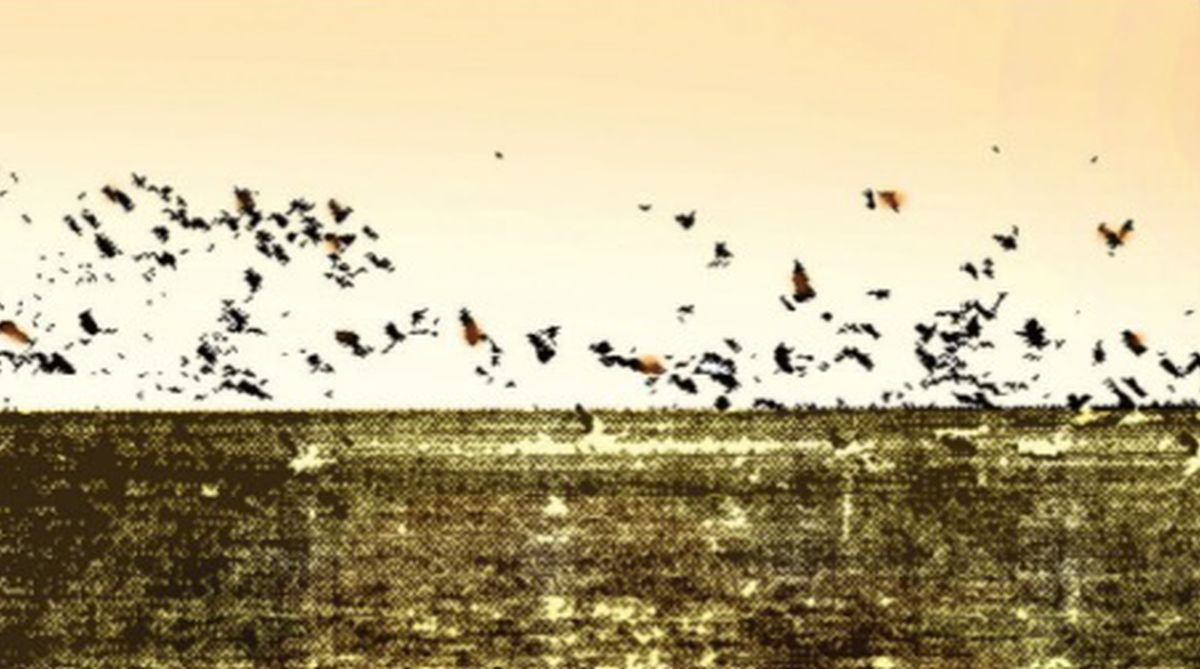ONE of the great attractions of the Manas sanctuary, the masheer fishing that it offers was wasted on me since I am no angler. However, I did see plenty of the river, for when we left the sanctuary we took a boat and went miles down the Manas before continuing the journey over land.
I had to be up very early that morning for a quick visit to the Bhutan border before leaving the sanctuary. There were whit-capped redstarts on the stony bank, vivaciously conspicuous in spite of their small size, and a boatman waiting for us whose plaited peaked cap, gaily decorated with junglefowl plumes, was picturesque in the extreme but what intrigued and astonished us was neither on our side of the river nor across it, but in the air. High overhead there were great hornbills crossing over to the Bhutan forests singly and in small parties, whirring out of the treetops on our side and then sailing clean across, and in an hour (during which we, too, gained the Bhutan border) I counted a little over 200 of them.
For quarter of an hour after we had landed on Bhutan soil the birds continued to come across steadily, and then there were a few still coming, so that even assuming that the first birds to cross were the ones we saw, some 250 ~ 300 hornbills must have invaded Bhutan from India early that morning. In the afternoon they recross to the eastern bank of the river, apparently they roost in India and feed in Bhutan.
Later in the morning, after returning from the Bhutan border, we went down the river in a boat I was hoping to come across wild buffaloes and to get some pictures of them but I saw only a few too distant buffaloes which I could not photograph, however, I did see and photograph from close by a very dead buffalo cow at the carcass of which a number of white backed vultures and greater adjutant had gathered.
I believe that usually one sees quite a few buffaloes, and even an occasional rhinoceros or elephant on such a trip, but the only other beast I saw was an otter which negotiated the rapids with a casual ease that we could only envy.
The bird life of the river was fascinating. There were cattle egrets in a party on a flat island large cormorants sitting in black orderly rows along the water’s edge brahminy duck on the banks and in the water, and goosanders in the river alongside the banks. We stopped a few times to land, and on a low shingly bank I saw some pratincoles. The brahminy duck interested me specially. I think that no river however magnificent and remote from human dwellings, fails to gain a certain authentic wildness by the presence on its banks of these big, wary handsome duck, whose soft sonorous “ahonk” has such an evocative sound.
The duck were in pairs and small parties on shingle spits and low banks, and flew away when our boat was still some 30 yards away. I tried to get some pictures of them in flight at 1/500 of a second I thought the shutter speed adequate to get clear pictures of them in flight, for their wing action is not rapid as it is in many other duck. However, when I developed my negatives I found them badly blurred ~ I had not allowed for the lurching motion of the boat which even when slowed down could not be stopped in the swift river. It should be realised that any camera with a focal-plane shutter is apt to yield pictures that suffer badly from camera shake, when the pictures are taken from a moving base even with the shutter speed set at 1/1,00 second the slit takes all of 1/50 second to complete its traverse.
This was published on 29 December 1968











